After Years of Community Organizing, Nonprofits Now Get Much-Needed Relief from Dangerous Tax Lien Sale
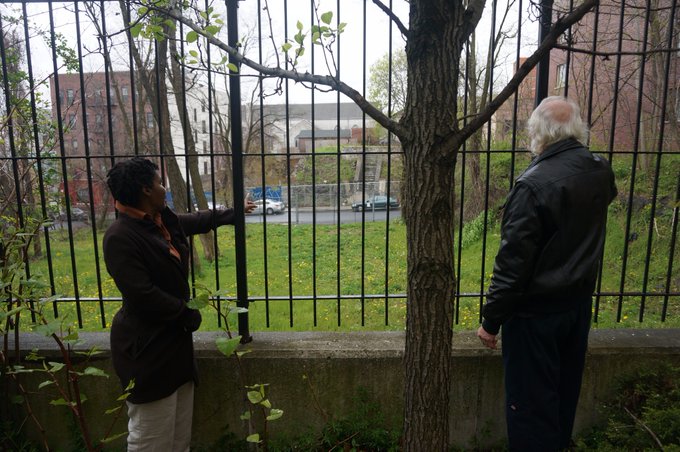
Nonprofits have a lot less to fear now as a new law takes effect (photo: @596Acres)
Our interconnectedness has rarely been more pronounced than it is in this moment. The fact that we can take so many of our life-sustaining connections into the digital sphere is an unprecedented miracle. But if you’re missing New York’s places of physical gathering, where many of those connections were first forged, you’re not alone.
At its core, New York is a city of communities precisely because of its bounty of gathering places. As we reflect on the ones we miss, that we hope to return to as soon as possible, we can celebrate a new law that goes into effect today - Friday, March 27 - that will protect some of them.
In 2014, attorney Paula Segal, founder and then director of 596 Acres, the community land access advocacy nonprofit, got a call from community gardeners in Crown Heights, Brooklyn. They were distressed. They had continuously grown food and flowers and found solace on a patch of earth in their neighborhood since 1979. Now the land was in peril.
Unpaid tax debt on the nonprofit garden would soon be sold as a lien to a private investor-backed trust via the city’s tax lien sale. If left unpaid, the debt could lead to the trust initiating foreclosure. Gardeners were planning their first-ever bake sale to pay off the taxes, and they weren’t sure if it would be enough to keep the garden from disappearing.
Taking on the case as an attorney, Paula helped this Crown Heights garden get out of the tax lien sale and into the hands of Brooklyn Queens Land Trust (BQLT), a network of community gardens that, together, have bigger administrative capacity. BQLT raised money, paid the bills, and ensured that the garden would get the nonprofit tax exemptions entitled to it going forward. But the problem wasn’t over.
Soon after, Paula got a call from elders at a second garden having the same problem. Then a mosque, a community center, a synagogue, a theater, a choir hall, a church, and it went on. Each nonprofit-owned place was enduring a nightmarish situation of its own due to the same government practice: the New York City Department of Finance tax lien sale. Paula turned to the public data to understand the scope of the problem.
It is well known that nonprofits are exempt from paying property taxes in New York State. Less well known is the tax lien sale process. The tax lien sale in New York City started in 1996. Through it, each year the Department of Finance (DOF) bundles all the outstanding bills --unpaid taxes, water and sewer bills -- and sells the whole bunch to a private investment fund as liens, which is the right to enforce debt through collection and foreclosure. Wealthy individuals and corporations alone can buy into the fund to grow their wealth.
Through the sale, the city government gets paid 72 cents for every dollar of debt and private investors get triple-A investments plus the right to charge interest, collect debt, and initiate foreclosure leading to sale of these properties at auction to the highest bidder. Unfortunately, this sale routinely and mistakenly included nonprofits entitled to tax exemptions. At auction, these nonprofit-owned properties could be sold to anyone.
We know 300 nonprofits had debt sold by the city to the investment trust because advocates painstakingly went through the public data. Every year since Paula first got that call from the Crown Heights garden, it was like a bell would ring 90 days ahead of the sale, and staff from advocacy organizations, with help from volunteers, would begin to dig through the DOF’s spreadsheets, separating out the charities, hunting down their contact information, and reaching out by any and all means. Dreaded phone calls went something like: ‘Um, hi, you don’t know me, but your lovely theater might be at risk of foreclosure? Here’s who to call and what to do to get off the list.’
At first, advocates would whittle DOF’s lists (both sold and to-be-sold lists) down to all properties not classified as residential or utilities, then compare what remained to property ownership records to find which were charities and to locate contact information. In 2017, in response to advocates' requests, the City Council mandated that DOF publish a list specifically of the charities headed to each year’s lien sale. But these lists left out the owners’ names, so advocates still had to hunt those down in order to get in touch.
At the same time, 596 Acres set other strategies into motion: publicizing maps of all the nonprofits at risk in past and current years, meeting with City Council members, hosting events that brought together DOF staff with the leaders of at-risk nonprofits, creating guides for nonprofits to navigate the process, working with the DOF’s newly-minted taxpayer advocate so they would be prepared to assist nonprofits, and coordinating press pieces.
TakeRoot Justice and 596 Acres organized the impacted nonprofits and their supporters into the Protect Our Places Coalition, which had meetings and rallies on the steps of City Hall each year. At these rallies, leaders of impacted organizations would speak, often in conjunction with opportunities to testify before the City Council on the new bill, known as Intro. 245, that the coalition was working on to stop the problem. Paula had joined TakeRoot Justice as a staff attorney in early 2017.
After roughly six years of work and legislative wrangling, Intro. 245 was finally passed on February 27, 2020, and thankfully goes into effect today. The Protect Our Places Coalition had a final gathering on the steps of City Hall that February day, celebrating with speeches and music, and expressing gratitude for all who came together to correct this injustice, including the elected officials who truly can be the people’s lawmaking champions.
Organizations contributed to this winning campaign from far reaches of New York City: from Brooklyn, 1100 Bergen Street Community Garden in Crown Heights, Masjid Al Aman in East New York, and Devoe Baptist Church in Williamsburg; from Queens’ Merrick Marsden Community Garden in Jamaica, Haven Ministries in Far Rockaway and Al Muneer Foundation in Hollis; from the Bronx, Mary Mitchell Center in Crotona; from Manhattan, Hebrew Actors’ Foundation in the Lower East Side; and many others. These groups advocated tirelessly for the survival of their own spaces. Doing so together, they connected the dots between their individual nightmares to push for system-level change.
Aligned technical assistance and umbrella organizations contributed by supporting at-risk organizations in their networks, connecting organizations to city officials, and helping draft legislation. Elected advocates helped individual nonprofits in their districts while championing the new law, led by City Council Member Antonio Reynoso and members of the Council’s Progressive Caucus.
Today’s victory is a chance to reflect on how individual struggles against bureaucratic practices can be scaled up to make legislative change, with the help of many advocates. It’s a moment to gain inspiration from a winning campaign that moved from case-by-case problem solving to big-picture change by considering the elements that led to its success, including persisting on the path year after year.
It is also a moment to appreciate the belief at the heart of the work: small charity organizations across our city provide neighbors with invaluable services in decentralized, locally-relevant ways. The city should support their capacity to own, develop, and operate property that provides for their neighbors and that becomes the setting where we form strong connections to one another. Our connections are essential for our resilience. Even as we continue this work from home, our networks have never been more important than they are today.
***
Mara Kravitz was an organizer with the Protect Our Places Coalition between 2016 and 2020, working for 596 Acres and TakeRoot Justice.
***
Have an op-ed idea or submission for Gotham Gazette? Email This email address is being protected from spambots. You need JavaScript enabled to view it.
Coronavirus Laid Bare the Gap in Health Care Coverage for NY and NJ Airport Workers; Let’s Close It Right Away
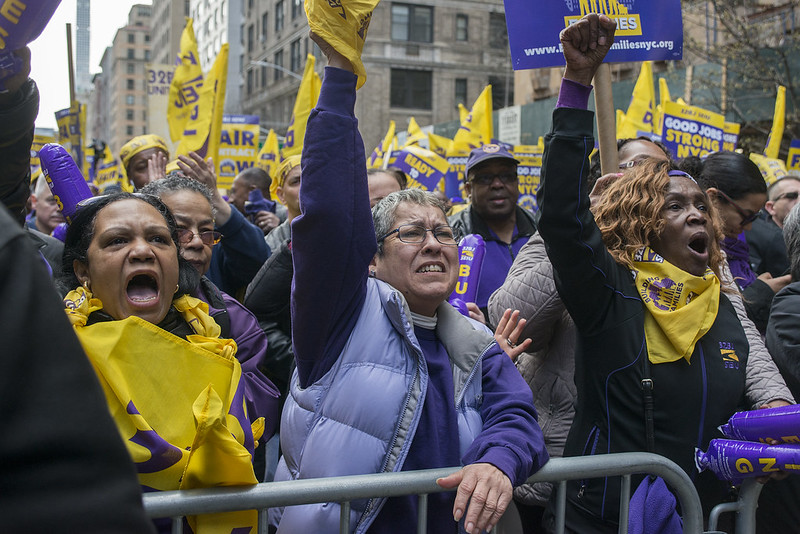
32BJ SEIU workers rally for job protections (photo: Jeff Reed/City Council)
The coronavirus pandemic has made it clear that there are a host of vital service jobs that are essential to keeping people safe under extreme conditions. Among them are the workers at our nation’s airports, who have been on the frontlines of the COVID-19 outbreak from the start.
Reports of possible infections at John F. Kennedy International Airport and other hubs are increasing. Many of the 40,000 airport workers in the New York area are members of my union, 32BJ SEIU. More and more have told me they're proud to help keep our airports and planes clean and safe during this unprecedented crisis, but they are increasingly worried about their own health.
Even before the spread of COVID-19, airport workers were at extreme risk for injuries on the job and for infectious diseases because of the nature of their work with travelers and the often taxing physical demands of their jobs. Despite these difficult conditions, many of our airport members who work at JFK, Newark International, and LaGuardia Airport, do not have health insurance.
Often, these workers, who have been waging a successful campaign to raise their wages and get respect on the job, are offered employer-provided insurance that is too expensive for them, with high premiums, co-pays, and deductibles. Because of their rising wages, they make too much money to qualify for Medicaid.
For tens of thousands of airport workers, they fall into a gap in health insurance coverage, putting them in the unenviable position of not being able to see a doctor without worrying the bill will mean they can’t pay their rent for a month.
One of those workers is Luerica Fiffee, a passenger service representative at JFK and mother of seven. Luerica has close contact with passengers -- scanning their passports or directing them after they get off their flights -- and she is worried about getting sick and spreading it to her family. Before the COVID-19 pandemic, when she felt sick, she would make the tough choice about whether to go to the emergency room and hope that she’ll be able to pay the bill. Now, as she worries about her health and the future of her job in a struggling industry, “I can’t even afford to think about getting the virus,” she said.
The risk of airport workers without health care is not just borne by Luerica and her coworkers but shared by everyone in the airport. Travelers cannot make their journey unless airport workers check their tickets, clean the terminals and aircrafts, and handle their baggage. Airport security officers make sure travelers are safe, wheelchair attendants help our most vulnerable passengers, and line queue agents make sure everything is orderly. Airport workers are essential to air travel. And if they are infected with the coronavirus, passengers will be too.
To help close the insurance gap airport workers face, legislators in Albany and Trenton have introduced the Healthy Terminals Act, which would require employers in the airports to provide a benefits supplement that airport workers could use to acquire quality, affordable health insurance.
As COVID-19 has upended the legislative calendar, lawmakers in Albany and Trenton must take action right away. Airport workers are calling on legislators to use every mechanism at their disposal to urgently pass these bills.
Adding to this critical calculus are the waves of layoffs going on at airports as air traffic slows considerably. The Trump administration and Congress appear poised to offer billions of dollars in bailout money to airlines but it is unconscionable to ask workers making less than $20 an hour to take on the worst health and economic risks of this outbreak while only offering relief to the highly profitable corporations. Any bailout of the airlines must include generous sick leave, health insurance, and back pay for lost wages for airport workers.
Finding a sustainable solution for the industry’s problems that centers workers and not CEOs and shareholders will be an arduous fight. But we can start with a comparatively easy solution for health care coverage that lawmakers in New York and New Jersey can enact quickly to close the insurance gap.
***
Kyle Bragg is president of 32BJ SEIU. On Twitter @kyle32bj & @32BJSEIU.
***
Have an op-ed idea or submission for Gotham Gazette? Email This email address is being protected from spambots. You need JavaScript enabled to view it.
Lessons from 9/11: A Needed Piece of the Coronavirus Recovery Plan
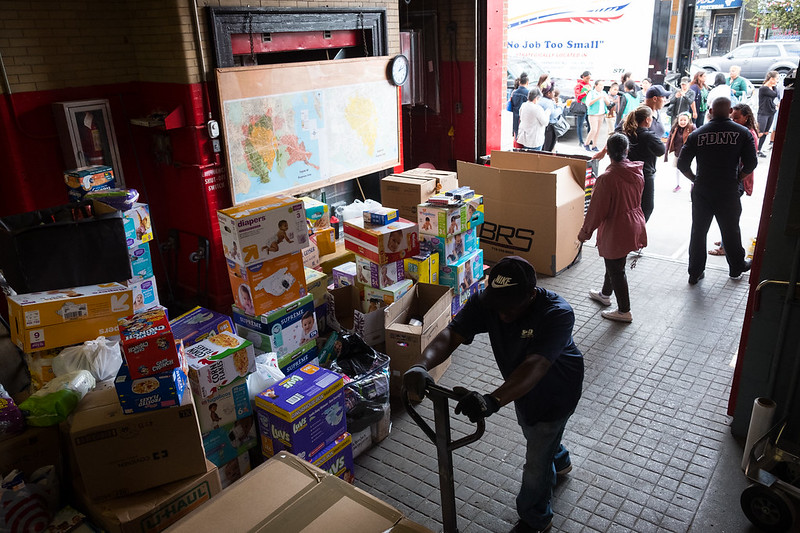
emergency supplies at a local firehouse (photo: Edwin J. Torres/Mayor's Office)
As the city and state are on pause and most people are shut in, many (including me) are stunned and anguished about the sudden shutdown of the city’s economy. Restaurants, bars, and personal services are the grout that holds our neighborhoods together. We are heartbroken about all the waiters, cooks, bartenders, manicurists, personal trainers, and others who are now unemployed; many of these people who give character to our lives are now in dire financial straits. The same is true for cleaning and other front line staff at hotels, taxi and for-hire vehicle drivers, theater and movie staff, and many thousands of others, both regular employees and part-time, off the books, and gig workers.
The aid and recovery legislation that has been agreed to by Congress and the Trump administration will do much to help, by sending checks directly to workers, extending unemployment benefits, and providing loans to small businesses so they can keep employees on the job and try to stay in business. Bravo.
But we are in for a long siege in New York as coronavirus cases continue to grow, hospitals are overwhelmed, and much of the city’s daily life is kept on hold. While many are suffering, others are continuing to work from home and receive their paychecks; indeed, some of us are fortunate enough not to have to depend on paychecks to provide for food, shelter, and other daily needs. There is an untapped wellspring of support from those who want to help their fellow New Yorkers who are struggling. What can they do?
This is a situation in which, for many who should not be leaving their homes to volunteer at a food bank or child care center, the best thing to do is contribute money. Of course individual donations cannot begin to match the magnitude of aid and support that is needed from government. But there are many ways that private donations can be used to make a difference.
Restaurants, trade groups, and social service agencies have been trying to raise money through approaches such as selling gift certificates, starting GoFundMe campaigns, and other kinds of outreach. But these well-intentioned but ad hoc efforts cannot be as effective or reliable as a more centralized, coordinated effort.
The September 11th Fund, for which I served as CEO, is sadly relevant today, and the creation and operation of that Fund is a useful model as we plan ahead now. A large, well-regarded New York City organization or group of organizations (e.g. Association for a Better New York (ABNY), The Partnership For New York City, The New York Community Trust, etc.) should create a 501(c)(3) that will accept donations from individuals, corporations, and charitable foundations. The fund’s board of trustees would use the money raised to assist victims of the coronavirus and its fallout — with the term ‘victim’ broadly defined — who live and/or work in New York City.
I don’t know how much money could be raised, but by way of comparison, when The New York Community Trust and United Way created and announced the September 11th Fund, $500 million was raised in less than four months. If New Yorkers who are able donate the amount they usually spend in one or two months on dining and drinking out; hair, nail care, and gym memberships; and theater, movie, and concert tickets, I suspect tens or even hundreds of millions of dollars can be raised very quickly.
In addition to the $200 million in one-time cash payments The September 11th Fund made to the families of those who were killed in the World Trade Center attack, it also made monthly payments to individuals who worked downtown whose jobs were lost when the area south of Canal Street was closed. Of course the number of impacted workers was small in comparison to the roughly 300,000 to 500,000 city-wide who are already affected. But the experience does show that New Yorkers will contribute to such an effort, that it can be up and running quickly, and make a difference.
Technology has improved so much since 2001 that many of the administrative tasks to start and run such a fund would be far easier. Software to maintain a large database and print checks and/or transfer funds is now readily available. Ideally there should be one non-profit service provider (in The September 11th Fund case it was Safe Horizons) that can process applications for direct assistance, but this will be challenging in a time when people are not easily able to show up in person.
There are of course complex policy questions to be addressed, including what kind of assistance is most needed and who is eligible. The board of trustees to be created to govern the fund would need to make difficult decisions as The September 11th Fund board did. But the most urgent question right now is who will take the initiative to form the fund and get the fundraising going.
The September 11th Fund was announced in a full page ad in The New York Times on September 13, 2001. I think the Times would agree to publish such an ad free of charge now, as would other city publications. And now we have Facebook, Twitter, Instagram, and other social media to help raise funds. A concert on behalf of the new fund, like the one at Madison Square Garden after 9/11, broadcast on TV and online, during which viewers could contribute by phone or on line, would raise even more money.
I urge business and civic groups to convene and take up the challenge to get this going as soon as possible. Many of our fellow New Yorkers need our help.
***
Carol Kellermann was president of Citizens Budget Commission from 2008 through 2018.
***
Have an op-ed idea or submission for Gotham Gazette? Email This email address is being protected from spambots. You need JavaScript enabled to view it.
Our Patients Need Medically-Appropriate Shelter, During Coronavirus Outbreak and Always
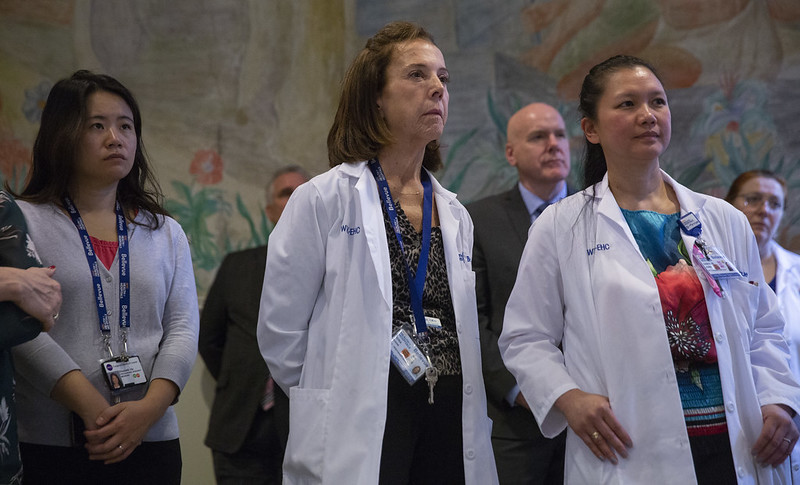
(photo: John McCarten/City Council)
What happens when a historic pandemic collides with an unprecedented housing crisis? The inextricable link between housing and health is now more apparent than ever as doctors both care for critically ill patients with the novel coronavirus, COVID-19, and simultaneously scramble to make plans for the most vulnerable in our society who simply have no place to isolate.
Only a few weeks into this crisis, we have seen numerous patients recuperating from COVID-19 who linger for days in the hospital because of their need for medically-appropriate shelter. This highlights the immediate need to establish “medical respite” opportunities. Medical respite facilities are settings that “provide a safe and humane alternative when discharge to home is not possible for people without home,” in the words of the National Healthcare for the Homeless Council. These should be available for any New Yorker in need.
In hospital and emergency medicine, providers are familiar with the idea of a ‘social admission,’ meaning that a patient may enter or remain in the hospital because he or she has no place to safely care for him- or her-self. Reasons range from needing intravenous antibiotics or oxygen supplementation, to simply “aging out” of the ability to care for oneself. Such social admissions often stay in the hospital for weeks or even months longer than would a medically-similar patient with more secure housing and social support.
Today, facilities around the country are keeping homeless patients with the novel coronavirus in hospital beds, sometimes for days, because they lack a secure non-hospital setting in which to isolate. This week in New York has clearly demonstrated that a hospital bed is a dangerously scarce, life-saving resource for critically ill people coming into the hospital in the midst of a worldwide pandemic.
Based on guidelines from the Centers for Disease Control, if a person develops fever and symptoms of a cold and is concerned about having the novel coronavirus, hospitals are generally recommending: Stay home, keep a safe distance from others, regularly wash your hands thoroughly with soap and water (or hand sanitizer), avoid public transportation, and call your doctor before reporting to one of the already-overcrowded emergency rooms, where people are equally at risk of spreading or contracting the virus. Clearly this is incredibly challenging for any person in the shelter system, living on the street, or living in an overcrowded space. For those who are homeless but avoiding the shelter system, preferring to remain on the street, protecting themselves from close contact with others, even washing their hands, may be next to impossible.
In just the first few weeks of this crisis, in a small swath of the city, COVID-19 has crudely unearthed every failing of our society when discharging patients back to the community: living 6-8 people in a studio, couch surfing after recent layoffs, and needing to avoid domestic violence. Housing is clearly complex, and the numbers reflected in the official shelter census just scratch the surface of those in our city who may have a need for respite locations.
Clearly, our society is only as resilient as the structures in place to care for the most vulnerable during a time of pandemic. We need rapid, effective access to isolation facilities for homeless and unstably-housed people who are sick but not requiring inpatient care, whether or not they have previously stayed in the shelter system.
The system must be streamlined, with the referral process clearly communicated to hospitals to facilitate expedited transfer from either hospital discharge or outpatient clinics to isolation settings. We need immediate access to individual rooms for people becoming homeless in the wake of the pandemic, having been pushed out of unstable housing or discharged from various institutions. People need the ability to come off the streets with access to individual rooms where they can safely isolate for their safety and that of others.
Every hour and every open hospital bed will count in our management of this crisis to support our inundated healthcare system as we provide life-saving care to the most vulnerable in our city, and all New Yorkers.
***
By Amanda Ramsdell, MD; William Levine, MD; Aarti Patel, PA-C; Nell Eisenberg, MD; Laura Kolbe, MD; Yinan Lan, MD; Todd Cutler, MD; David Scales, MD, MPhil, PhD; and Lucy Willis, MD. On Twitter @ARamsdell3, @aarthiparthi, @nellbell_e, @laurakolbemd, @todd_cutler, @DavidAScales, @LucyWillisMD
***
Have an op-ed idea or submission for Gotham Gazette? Email This email address is being protected from spambots. You need JavaScript enabled to view it.
Medical Cannabis Gave Me My Life Back; The Program Should Be Expanded to Help Even More People
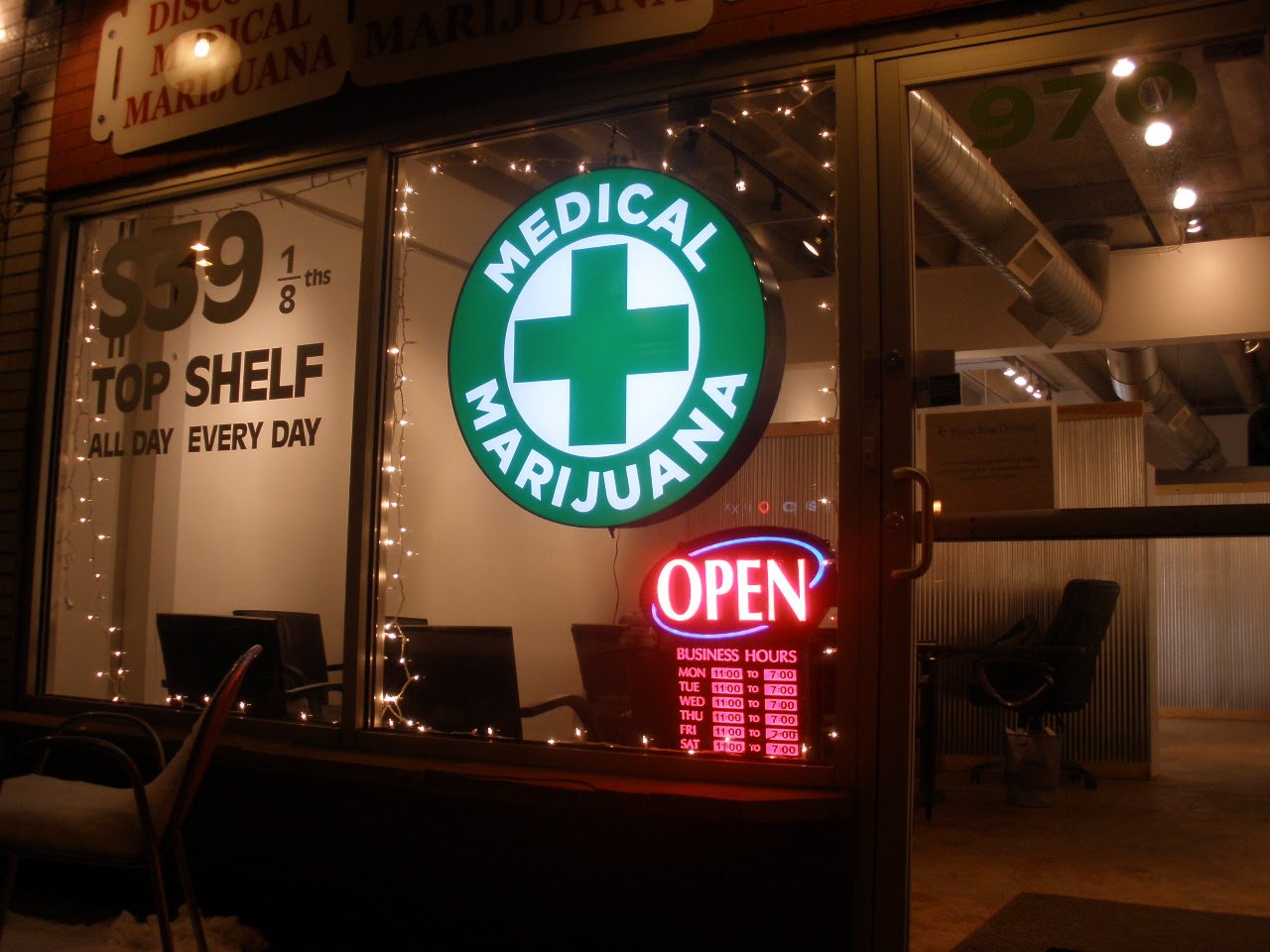
Medical Marijuana has major benefits, the author writes (photo: Wikimedia Commons)
As a teenager growing up on Long Island, I struggled with both anxiety and depression daily. After being attacked and hurt in a workplace injury during college I began experiencing symptoms of Post-Traumatic Stress Disorder daily, and night terrors every time I attempted to sleep. My anxiety worsened considerably and became a constant companion; I was deeply depressed. Getting up was difficult, attending school felt impossible, and going to my part-time jobs was out of the question.
I wanted my life back.
My doctor prescribed multiple medications to address my many symptoms. My dosages steadily increased as a single capsule failed to bring sustained relief. Instead of getting better, my situation deteriorated. I was drowsy most of the time, basically a walking zombie.
Desperate to regain a sense of normalcy, I started to research nontraditional options. In 2014, Governor Andrew Cuomo signed a bill into law legalizing cannabis for medical use in New York, and my doctor suggested I consider this route.
Under my doctor’s recommendations, I began to experiment with different Tetrahydrocannabinol (THC) and Cannabidiol (CBD) ratios to figure out what works best for me. Eventually, we landed on a combination of an oromucosal spray with a high CBD ratio in the mornings to keep me calm and capsules or vaporization in the evening to help me sleep.
The results have been overwhelmingly positive. I was able to slowly wean myself off my traditional medications with my doctor’s oversight and get back to my life – whether it be going out with my dogs or hanging out with friends – just really enjoying everything I loved but hadn’t been able to do.
Getting up became easy and going to school became fulfilling and interesting – so much so that I decided to pursue an M.S. in Medical Cannabis Science and Therapeutics at University of Maryland’s School of Pharmacy to truly understand the benefits of cannabis.
In short, medical cannabis works, not just for me, but for the 114,000 other certified patients who benefit from New York’s program.
But we can do more.
Medical cannabis medication is not covered by insurance. To afford my treatment, I’ve had to cut costs and stick to a strict budget. Thankfully, my local dispensary offers discounts and other programs to make sure people like me can get the products we need to live full, productive, and pain-free lives.
Also, I’m lucky that my PTSD and attendant symptoms have been included on the list of qualifying conditions to be able to access medical cannabis. I know many more people could get relief like I have if the state broadened the list further, and I’m thankful additional conditions have been slowly added since the program began.
The current patient-to-dispensary ratio of 500,000 to 1 in New York is also an obstacle preventing people like me from accessing medical cannabis. It doesn’t make sense to me that there’s a drug store within easy access in almost every community in the state, but some medical cannabis users must travel hours to obtain the treatment on which they rely.
Greater access, lower costs of medication, and fewer barriers in terms of qualifying conditions should be the standard in New York. As the governor and state lawmakers consider expanding legalization of cannabis to include adult recreational use, they need to recognize the importance of protecting and growing the medical program that is already helping so many people like me – and could, with the right support, help many more.
***
Alison Dixon is a Long Island resident and Curaleaf patient.
***
Have an op-ed idea or submission for Gotham Gazette? Email This email address is being protected from spambots. You need JavaScript enabled to view it.
The Coronavirus Crisis Demands a Federal Emergency Housing Response
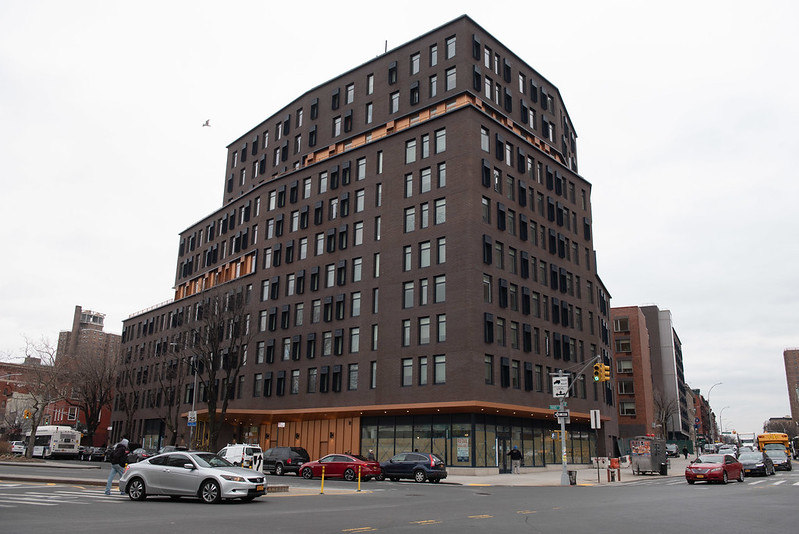
Keeping people in their homes is of the essence, the author writes (photo Michael Appleton/Mayor's Office
The federal response to the economic crisis just over a decade ago swiftly bailed out banks and other financial institutions, but left far too many struggling families in the lurch. It was too little, too late. This was devastatingly true for black families, whose home-ownership rates dropped from 50% to 42%, representing an enormous loss of generational wealth.
We must respond differently this time to ensure that homeowners hold onto their homes and apartment building owners and renters maintain safe and stable housing through the COVID-19 public health crisis that has also spurred an economic one. And because it is a health crisis, we should first prioritize vulnerable populations like those without a home and low-income renters at risk of homelessness.
While we are still processing the gravity of COVID-19’s destructive capacity and the consequences for our families, communities, and economy, as has occurred in past natural disasters, we know the effects on homeless people, low-income renters, and homeowners will be catastrophic unless we act quickly. Federal housing assistance is desperately needed both to slow the spread of the coronavirus and in response to what is looking like a significant economic downturn as businesses and entire industries may be closed for months while capital markets are in turmoil and job losses skyrocket.
Emergency housing assistance is a critical component of a comprehensive response of public policy measures to stop the spread. New York already has an alarming number of confirmed cases of the new coronavirus in homeless shelters. Statewide, there are more than 92,000 homeless people. In addition, 100,000 children were living doubled up last year in overcrowded homes. Without the ability for social distancing or isolation, homeless people are at great risk while living on the street, in congregate shelters, or doubled-up in close quarters.
If the virus spreads through the 841 beds in the Bellevue men’s intake facility, for example, those men could nearly fill the 1,000-bed naval hospital ship scheduled to sail to New York City to bolster hospital capacity next month.
Federal resources must be appropriated for a swift response or COVID-19 is certain to rip through congregate shelters, street homeless communities, and reverse other containment efforts. Congress must appropriate at least $15 billion in McKinney-Vento Emergency Solutions Grants to move homeless people off the streets and out of crowded shelters.
Rental assistance and rapid re-housing programs can be used, as they have in the aftermath of other national crises, to house vulnerable populations. This time, these housing programs can also save lives.
The White House and Senate Republicans have included zero emergency housing assistance in the stimulus package currently being negotiated. This is a strategy to fill hospital beds at a rapid pace and further overwhelm our health care system.
And while they are proposing direct assistance — up to $1,200 to individuals — it will be insufficient, particularly in high-cost markets. In New York City, where 50% of all households already pay more than 30% of their income towards rent, the median rent was $1,450 in 2017.
According to the New York State Department of Labor data, in January there were roughly 1.3 million people in the state working in hospitality jobs in the arts, hotels, or restaurants and bars, or in retail jobs like clothing, electronics, and sports. Most of these people are now out of a job. Their income has been reduced to zero.
We are grateful that these workers will have the protection of the state’s foreclosure and eviction moratoriums. However even with this, people aren’t going to be able to afford the back payments in six or 12 months. A moratorium alone is only kicking the can down the road. We need assistance now that is appropriately sized to cover household costs.
Fannie Mae and Freddie Mac offered loan forbearance for building owners who offer protections to their renters. This approach makes sense because it shows that we are all connected and in it together, even when we are trying to keep six feet apart. But much more needs to be done.
The New York City Housing Authority (NYCHA), steward of New York City’s most affordable housing, also estimates that it will need $300 million in additional operating funds to cover rent losses, and additional time and contractors to keep up with the higher standards of cleaning now required to protect its 400,000-plus residents. All properties assisted by the federal Department of Housing and Urban Development (HUD) and the Section 8 program will face the same challenge of declining income and insufficient funding. Congress must include these critical HUD programs in the stimulus to ensure that these programs are fully funded and families are not kicked off programs due to lack of funds.
We urge Congress to do the right thing this time and ensure there is emergency housing assistance in the economic stimulus and coronavirus recovery bill that protects renters and homeowners across the nation. This is how we can do better than our response in 2008, help families hang onto their homes and vulnerable renters stay in their apartments.
***
Rachel Fee is Executive Director of New York Housing Conference, a statewide affordable housing policy organization. On Twitter @RachelFeeNYHC & @theNYHC.
***
Have an op-ed idea or submission for Gotham Gazette? Email This email address is being protected from spambots. You need JavaScript enabled to view it.
Open City Streets to Promote Social Distancing and Public Health
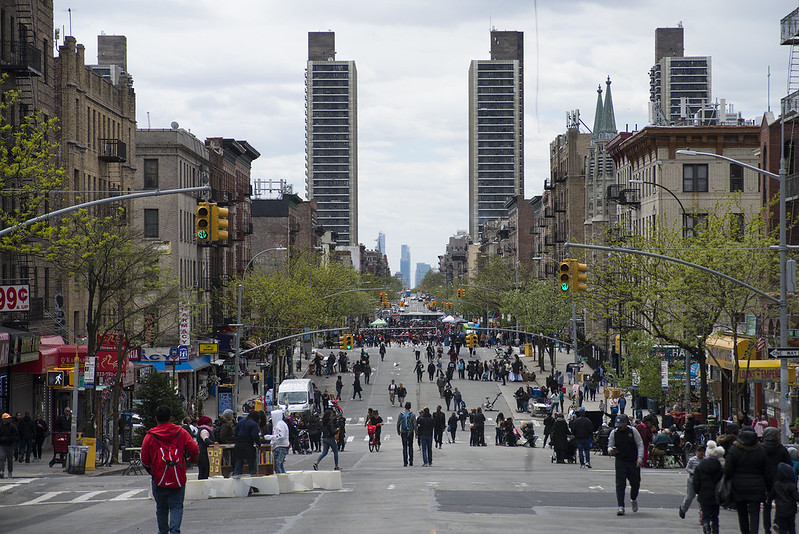
Car free day 2019 (photo: Jeff Reed/City Council)
The COVID-19 pandemic is posing an unprecedented challenge to New Yorkers. As we face this surreal moment together, we are also learning what it means to practice “social distancing” — and, inevitably, it has not gone perfectly. Case in point: we have taken to city parks in astonishing numbers, creating crowds and density that risk spreading the very virus we’re trying to fight.
Is it possible for New Yorkers to maintain a safe distance and “flatten the curve” without foregoing fresh air? Put another way, can we practice good public health without sacrificing personal physical and mental health?
Yes, we can: by repurposing some of our currently underutilized streets into pedestrian boulevards, we can take the pressure off our park space and reduce pedestrian density.
While our parks become more crowded -- Spring is also upon us, after all -- New York City’s streets are experiencing an extraordinary decline in vehicle traffic. According to the New York Times, weekday afternoon rush-hour traffic recently moved 36 percent faster, and carbon monoxide emissions fell more than 50 percent.
The shrinking street space used by cars and trucks means we can dedicate more space to pedestrians, reduce the crowding in our parks, and allow New Yorkers to get a respite from the indoors while keeping a safe distance. To do this, city government should identify specific streets on which non-essential vehicles are prohibited, and dedicate that space to pedestrians.
We already know how to achieve this. For three Saturdays in the summer, New York City kicks cars out of a nearly seven-mile stretch of Park Avenue in Manhattan, from downtown to 72nd Street on the Upper East Side, and makes a car-free connection to Central Park along 72nd Street. That’s a model to build on now. And we wouldn’t be alone in expanding a summer streets program to promote social distancing. Philadelphia, for example, recently closed a long stretch of its bustling MLK Jr. Drive indefinitely to vehicular traffic.
Local leaders are beginning to see the wisdom in pedestrianizing streets. On March 20, New York City Council Speaker Corey Johnson called for a “Summer Streets like program to give more room for children and adults to use our streets free from cars to allow for the social distancing needed.” Two days later, on Sunday, Governor Andrew Cuomo called on city leaders to reduce overcrowding in city parks, including “open[ing] streets to reduce density.” “That's where people should be — in open space areas, not in dense locations," the governor added.
New Yorkers must remember that staying home is absolutely imperative. But, when going outside, we should heed the governor’s recent executive order: “individuals should limit outdoor recreational activities to non-contact and avoid activities where they come in close contact with other people.” In other words, solitary exercise can promote physical and mental health, but no one should risk spreading coronavirus by engaging in group recreational activities.
The health benefits of even a short walk outside cannot be overstated. Decades of data underscore the correlation between physical activity and improved cardiovascular, bone, and lung health. Exercise has also been correlated with a decreased rate of depression and improved mental health. While there is no definitive data that outdoor recreation is superior to indoor activity, New York City gyms are (appropriately) closed and many New Yorkers barely have room for a futon, let alone space to exercise, in their apartments. Furthermore, outdoor exposure itself may have benefits on sleep, cognitive function, and mental health.
To be clear: recommending solitary recreation does not equate with outdoor social gatherings. Outdoor recreation should still be limited in time (common recommendations of 30-45 minutes of aerobic activity 3-5 times per week should be sufficient) and social distancing remains the first priority. Furthermore, for older adults and those with significant preexisting conditions the risk of any outdoor exposure right now may still outweigh the potential benefits. Even with excellent hand hygiene and preventative techniques, COVID-19’s transmissibility and surface stability make it dangerously easy to contract.
The city should not view pedestrianized streets in a vacuum. Rather, city leaders should take a holistic view of how our streets can both help New Yorkers run essential errands and get fresh air—at a safe distance.
First, we need more protected bike lanes, particularly for the delivery cyclists we ask so much of while restaurants close to dine-in customers. Second, we need to mitigate existing pedestrian crowding. The narrow pedestrian paths of the Central Park transverse roads connecting the Upper West Side and Upper East Side are a notable example. With vehicle usage depressed, the city should create wider spaces for pedestrians and cyclists.
Third, the city’s bridges need attention. On the Queensboro Bridge, cyclists and pedestrians have long shared the same extremely crowded path. The Department of Transportation can reduce that density by opening the bridge’s South Outer Roadway to pedestrians. (Disclosure: one of us, Billy Freeland, is a member of Manhattan Community Board 8, which recently asked DOT to study the feasibility of such a path. Billy is writing here in his individual capacity.)
Any plan to pedestrianize streets should be mindful of other vital needs. In addition to our moral obligation to ensure a protected bike lane that treats delivery cyclists with dignity and respect, pedestrianized spaces must ensure access for emergency vehicles. The city will also need to accommodate delivery trucks that stock supermarkets and other open stores, perhaps with dedicated delivery times early and late in the day. The Department of Transportation is well-equipped to consider and address these concerns, as it has done before.
We are all in this together. And we are all figuring this out together. Let’s look out for our neighbors, practice social distancing, and find creative ways to remain connected. And, yes, let’s open our streets to people.
***
Billy Freeland is an attorney and Democratic activist, and on Twitter at @policyjunkie. Dr. Philip Solomon is a geriatrician at a New York City health system.
***
Have an op-ed idea or submission for Gotham Gazette? Email This email address is being protected from spambots. You need JavaScript enabled to view it.
New York Mass Transit System on Verge of Going Broke, Needs Bailout Quickly
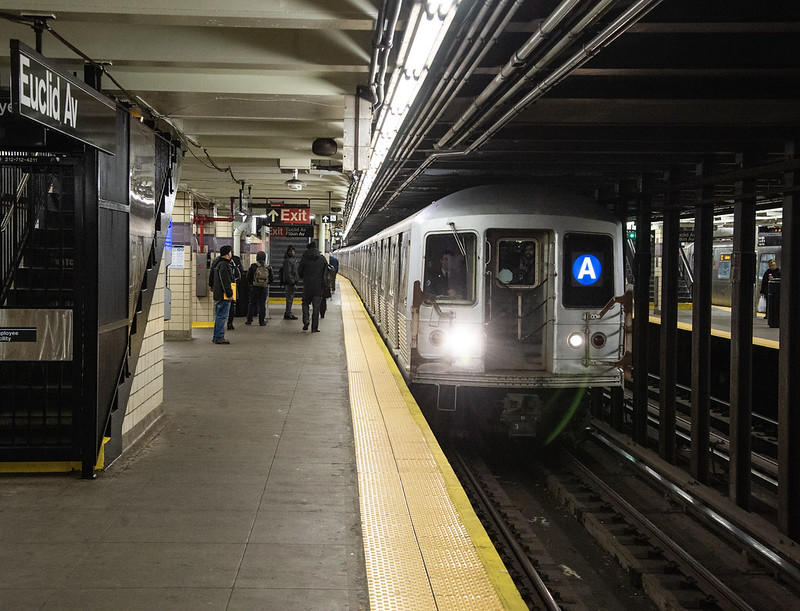
Subway ridership has plunged during the coronavirus outbreak (photo: Marc A. Hermann/MTA NYCT)
Patrick Foye, the chair of the Metropolitan Transportation Authority and therefore the leader of the city’s subway and bus systems, sent a letter to the local Congressional delegation on March 17 stating that the MTA faced financial calamity and seeking $4 billion in federal aid.
The MTA’s cash reserves are small, meaning it will go broke very quickly because of massive revenue losses (in this case resulting from the impact of the coronavirus outbreak). By going broke I mean unable to meet payroll and pay bills. More than 60% of the MTA’s expenses are for labor, nearly all of it under contract, and those workers need to keep getting paid.
In Foye’s letter to Congress, he reported the authority has drops of 60% in subway ridership, 49% in bus ridership, 90% in Metro-North ridership, and 67% ridership on the Long Island Railroad.
On March 19, MTA New York City Transit President Sarah Feinberg reported on WPIX-11 that subway ridership had dropped 71% from the same date a year prior. For the city subway and bus systems, that means MTA NYC Transit is still carrying 3 million daily rides, instead of the normal 7 million rides per weekday. Three million rides is still a lot of people and the system has to keep operating to bring health care workers, first responders, and others essential for society’s basic services, including in the utility industry, supermarkets and grocery stores, banking, some retail, and essential government functions.
Foye’s letter also cited a potential collapse of the $6 billion in taxes and fees directly dedicated to the authority that derive from economic activity in the metropolitan area. The prospect of rapid revenue losses puts the MTA in an impossible situation — it must keep paying its employees to operate the trains and buses, but its cash flow may be insufficient to meet payroll in the near future. Payroll, pension, and health and welfare also don’t include paying the fuel and electric bills, buying supplies, or the $250 million a month needed to pay interest on the borrowed funds that sustain the capital program and assets already put in place.
The MTA has only about $560 million in general reserves, about three-quarters of which is set-asides for retiree health and welfare, which the MTA is obligated to pay but, unlike the pension system, are unfunded. The MTA makes these payments for the retirees in cash out of the operating budget but they rise every year, though it has tried to accumulate some reserves for this purpose.
An analysis of the overall MTA budget shows, however, that the combined ridership and tax revenue financial losses by the end of April would bring a shortfall for the MTA of around $500 million from the $1.4 billion sum needed to pay one month’s MTA expenses. The monthly ridership revenue is about $500 million, and it is nearly six weeks to the end of April. A 50% drop would mean a loss of at least $375 million over that period. Foye’s reports indicate the ridership losses exceed 50%.
The dedicated taxes and fees also run about $500 million a month, and even a 20% drop over the next six weeks would result in a loss of $150 million. With a revenue shortfall by the end of April of $500 million, the authority would need all of its reserves to meet payroll and the rest of its bills and would start coming up short in May. The table below, taken from Volume I of the MTA December budget, p. 14, provides the data to make the calculations.
|
A FINANCIAL SNAPSHOT OF THE MTA |
|||||||||
|
REVENUE SOURCE (millions) |
EXPENSE CATEGORY (millions) |
||||||||
|
Farebox |
$6,486.00 |
Payroll |
$5,525 |
||||||
|
Tolls |
$2118 |
Overtime |
$896 |
||||||
|
Taxes |
$6182 |
Health & Welfare |
$2171 |
||||||
|
State & Local |
$613 |
Pension |
$1467 |
||||||
|
Other Revenue |
$682 |
Other Labor |
$509 |
||||||
|
Funding Agreements |
$718 |
Non-Labor |
$4156 |
||||||
|
Other |
$203 |
Debt Service |
$2843 |
||||||
|
Total |
$17,003 |
Total* |
$16,991 |
||||||
(*includes adjustments of ($577 million) from use of reserves, etc.)
Getting bailed out by City and State government won’t work. The City and State are anticipating the major downturn in the economy severely affecting their own budgets. A new report by the State Comptroller’s office shows the State’s tax revenue could drop $4-7 billion below predictions from when the governor’s executive budget was released in mid-January.
Both governments have $6 billion or more in reserves and short-term borrowing powers, but will need these funds to sustain other government employment, the health care system, and public assistance, and will likely soon need to be bailed out by the federal government themselves. At best the City and State could squeeze out about $250 million each in the month of May for the MTA, but after that the federal government has to step in. Only the Feds have the unlimited borrowing power to stem the tide. The MTA will need large government cash infusions within the next several months.
The Capital Plan and Congestion Pricing
Both Governor Cuomo and Mayor de Blasio recently recognized the Trump administration was likely stalling the approval of congestion pricing, the $15 billion centerpiece of the long-term funding of the next MTA capital plan, which includes many important projects like re-signaling several subway lines. The Federal Highway Administration has to approve the State’s plan because our roads affect the Interstate Highway System.
Perhaps the national impulse to drop partisan rancor might diffuse hostility on this point. Maybe. New York might still need to await a Democratic victory this fall to assure that, sooner or later, congestion pricing will be approved by the presidential administration. But between Donald Trump and the new coronavirus, some parts of the MTA capital plan will likely be delayed until 2022 or beyond. The MTA’s capacity to operate needs help right now.
***
Jim Brennan was a member of the New York State Assembly for 32 years, where he chaired four committees. On Twitter @JimBrennanNY.
***
Have an op-ed idea or submission for Gotham Gazette? Email This email address is being protected from spambots. You need JavaScript enabled to view it.
Rolling Back Bail Reform Amid Coronavirus Outbreak Would Be Additionally Irresponsible
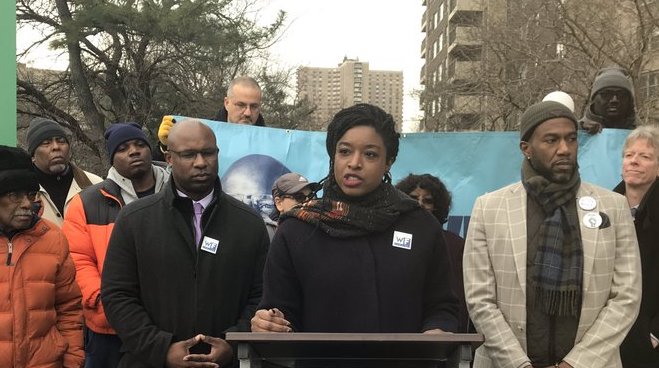
Sochie Nnaemeka, the author (photo: @sochiesays)
In moments of crisis, we see what our leaders value. Over the past week, coronavirus has spread to Rikers Island. Our state should be focused on keeping detained New Yorkers and correctional workers safe and healthy. Instead, elected officials may roll back bail reforms in response to fear-mongering by opponents of the new law. If our leaders in Albany choose to reduce the number of people eligible to await their trial from home, the jail population could grow during a dangerous pandemic. We must put human safety over punishment and refuse any changes to the bail system.
For too long, New York’s “justice” system disproportionately kept innocent black, brown, and low-income people in cages before even being convicted—all because they were too poor to buy their freedom. While the wealthy were always able to walk free, these communities were caught in an endless cycle of punishment. It took decades of grassroots leadership and activism led by black and brown organizers to finally change a blatantly racist, classist system in meaningful ways.
Republicans, District Attorneys, and law enforcement that have a vested interest in past and present inequities are doing anything they can to claw back their power to incarcerate even more people. And some state officials are already caving to the fear-mongering by proposing regressive bail rollbacks.
There is nothing more cynical or cruel than choosing to put more people in jail during a pandemic.
Behind the negative headlines, we know there are tens of thousands of lives being changed for the better because of the new bail reforms. All across the state, we are hearing stories of New Yorkers who can now continue their lives and care for their children, rather than senselessly languish in jail and have their lives upended. People who need treatment for substance use or mental illness can get access to the support they need, rather than sitting in jails that have little to no health services.
Bail changes should be left alone regardless of any new developments unrelated to their efficacy. But to roll back bail reform in the midst of this pandemic would mean the state considers certain people’s lives expendable, including thousands of people whose only crime is being poor.
At a time when Governor Cuomo is telling New Yorkers to remain home, stay six feet away from others, and avoid crowds, he cannot simultaneously support sending more New Yorkers to crowded, unsafe jails. Our elected officials should instead focus on releasing vulnerable New Yorkers who are at increased risk of illness and reducing the jail population.
What if the New York State Legislature committed itself to building a state that treated all New Yorkers with dignity and equal justice? As head of the New York Working Families Party, I know our members expect progressive leaders to govern with courage and moral clarity — not to operate within the same fear-based framework that maintained a racist justice system for so long. In this moment of crisis, we’re calling on New York state leadership to reject the politics of fear and put the health and welfare of all New Yorkers, including some of the most vulnerable, first.
***
Sochie Nnaemeka is New York Working Families Party State Director. On Twitter @sochiesays & @NYWFP.
***
Have an op-ed idea or submission for Gotham Gazette? Email This email address is being protected from spambots. You need JavaScript enabled to view it.
Coronavirus Crisis Spotlights Importance of Food Delivery Workers and Need to Legalize Their E-Bikes
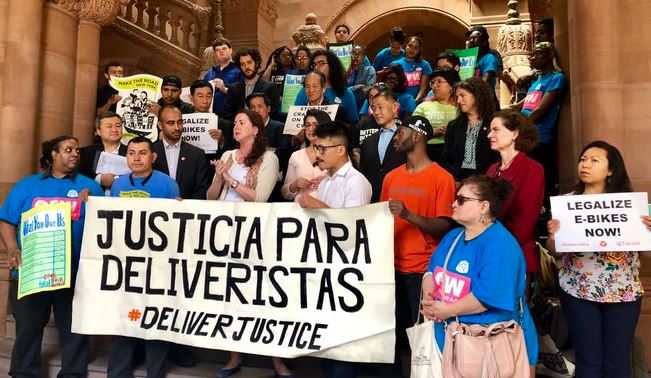
The push for legalizing e-bikes continues (photo: @nily)
Right now, our colleagues in Albany can deliver immediate justice and help keep New York fed and moving during a time of crisis. They must legalize electric-bikes in the state budget being finalized right now.
As part of the effort to slow the spread of COVID-19, the de Blasio and Cuomo administrations announced this week that restaurants, bars, and cafes would close for dine-in customers, but that take-out and delivery would remain available. This move made it clear that New York City’s food delivery workers, a workforce largely comprised of low-paid immigrant Americans from China and Latin America, would be shouldering a large burden, and would soon become a lifeline for potentially millions of New Yorkers during the pandemic.
That is why we are renewing, with urgency, the call for the legalization of e-bikes which most delivery workers use to complete their rounds.
About three-quarters of New York City’s 40,000 food delivery workers rely on throttled e-bikes, which are technically illegal to operate in New York because of a gray area in the state’s vehicle code. These e-bikes, which are different from the pedal-assist e-bikes deployed by Citi Bike, are critical equipment for delivery workers, many of whom are older than 60 and work 10-12 hour days. Try doing that job on a traditional bike and you might not last half as long.
Most e-bikes are legal in most states, including right across the Hudson in New Jersey. Yet here in the city, where making food deliveries makes the most sense on bicycles as opposed to cars, they are still somehow illegal. Most delivery workers’ median hourly wage is about $10. When stopped by police they are routinely ticketed upwards of $1,000 and have their bikes confiscated. When a worker’s bike is confiscated it means they can’t work to pay the fine, let alone feed their family.
However, while the de Blasio administration heard our demand to decriminalize e-bike enforcement in tandem with the coronavirus-related limitation on food service, there is no guarantee that this will be permanent after the crisis is over. To criminalize their work after such public service, even after they risk their lives and their families’ lives during this pandemic, would be a travesty of justice.
That is why we are calling on our elected leaders in Albany to (once again) pass and enact legislation to create a legal framework for e-bikes. Last year, the New York State Legislature passed legislation sponsored and impressively championed by Senator Jessica Ramos and Assemblymember Nily Rozic that would have legalized e-bikes and given municipalities throughout New York the authority to determine their use. Governor Cuomo vetoed that bill citing safety concerns, but he reignited the conversation with an admirable e-bike legalization proposal of his own in January.
The push to legalize e-bikes has a broad base of support, not only from groups fighting for immigrant and workers’ rights like Make the Road New York and the Legal Aid Society, but also environmental and transportation safety groups, like the New York League of Conservation Voters and Transportation Alternatives.
We are counting on all state legislators and Governor Cuomo to unite and pass a budget that guarantees permanent relief for delivery cyclists. Crises can lead to social change, and we expect one positive outcome of the era of social distancing will be a newfound social solidarity with the hard-working delivery workers who keep our city fed, and an end to the shameful police harassment they have weathered for too long.
By ensuring e-bike legalization right now more than 40,0000 hard-working New Yorkers would not have to fear retribution and confiscation of their tools during and after the coronavirus crisis, as they, with their own bodies on the front line, continue to feed New Yorkers, and keep restaurants, farmers, and other companies in business in these trying times.
***
City Council Members Carlos Menchaca and Margaret Chin represent portions of Brooklyn and Manhattan, respectively. On Twitter @cmenchaca & @CM_MargaretChin.
***
Have an op-ed idea or submission for Gotham Gazette? Email This email address is being protected from spambots. You need JavaScript enabled to view it.
New for New York City: What Solidarity Looks Like Amid Coronavirus Outbreak
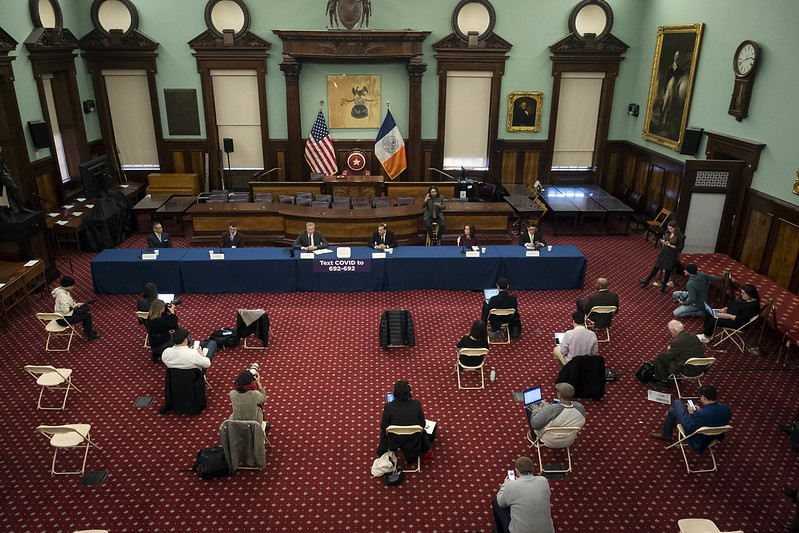
social distancing amid coronavirus is key (photo: Ed Reed/Mayoral Photography Office)
New Yorkers have a particular way of showing solidarity. After the terrorist attacks of September 11, 2001, resuming normal life was an act of bravery. We would not be derailed. We would carry on. As tragedies have struck other cities and countries, the language of solidarity, arguably the language of coping, has stayed the same. In essence, we come together, try to restore a sense of normalcy, and move forward.
The rapid spread of the new coronavirus, COVID-19, has rattled the global economy and disrupted everyday life. The Dow Jones Industrial Average had its worst day since 1987. Universities across the country -- including New York University, Columbia, and the CUNY and SUNY systems -- have cancelled in-person classes and moved instruction online; New York City public schools are switching to remote learning, as well.
Broadway shows are shuttered through at least April, and the Metropolitan Museum of Art has closed its doors. Late-night talk shows are filming without audiences, the NBA and NHL seasons are suspended, the start of baseball season is on hold, and the New York City Half Marathon is cancelled. Subway ridership has plummeted, all restaurants are reduced to takeout/delivery only, and the streets feel eerily quiet. Mayor de Blasio is now pushing for a “shelter in place” order.
On a visceral level, this feels like the opposite of what we should be doing. What about showing that we are better than this, that life can go on, that we are resilient? What about showing that we will not be cowed? Even after September 11th, Broadway shows reopened two days later. But the reality of this global pandemic demands a different sort of solidarity, one that feels at odds with how we would normally react when facing such a threat. Maintaining our routines and showing we are unafraid is pointless and will not help thwart this virus; instead, it would put us all at greater risk.
And so, our New York City solidarity needs to take a new form: social distancing, a phrase that has quickly become part of our daily lexicon. For creatures as social as we are, staying at home is difficult, especially in such a dense city. We are a society of people who find comfort in coming together and taking action, who are used to being crammed together in small spaces and making the best of it; robbed of these tools -- we cannot join marches or attend vigils like we normally would, we can’t even ride the subway like usual -- we feel trapped. Keeping our distance makes it feel like we are losing, but it has been shown to work when it comes to flattening the curve.
For now, our courage will need to remain unseen, our solidarity taking the form of empty subway cars and closed museums. For a city of people used to supporting one another by showing up, this is deeply unsettling, at odds with how we have been taught to fight back.
The psychological, physical, and economic toll social distancing will take on many New Yorkers may be devastating. A coalition of New York City landlords has pledged not to pursue coronavirus-related evictions, de Blasio is trying to keep human services nonprofits running, and senior centers are cancelling all social programming, serving meals instead. Meanwhile, Congress passed a $100 billion relief package and is working on a $1 trillion economic stimulus. Meanwhile, housing advocates nationwide are calling for a moratorium on rent, mortgage, and utility payments to help those out of work cope with their new fiscal reality.
Despite all these efforts, the mental and economic hardship caused by this pandemic will have long-lasting ramifications. It may be tempting for people in low-risk categories -- namely, young people with no underlying health concerns -- to go about life as normal. But if we keep carrying on like nothing is happening, we put the well-being of the most vulnerable among us at risk. Doctors are sounding alarms that our hospitals may be overwhelmed. We all need to do our part to minimize the spread of this virus, taking seriously the calls to avoid crowded places and stay inside even if it feels like the cowardly thing to do.
If we want to show solidarity in a more active way, perhaps we can leave some toilet paper and hand sanitizer for our fellow New Yorkers. We can also make ourselves available to help vulnerable neighbors in self-quarantine with no one to bring them food. Beyond that, though, we New Yorkers are slowly learning a new language for our solidarity: staying home.
***
Benjamin Heller is a graduate student at NYU’s Robert F Wagner School of Public Service. On Twitter @BenjaminHeller0.
***
Have an op-ed idea or submission for Gotham Gazette? Email This email address is being protected from spambots. You need JavaScript enabled to view it.